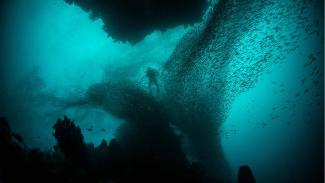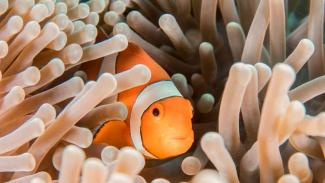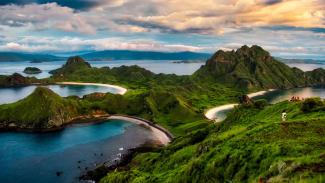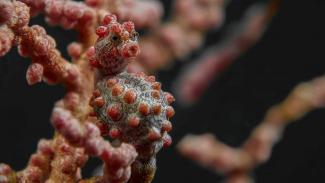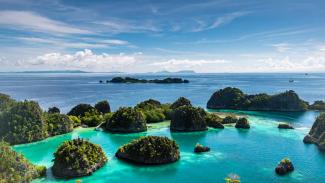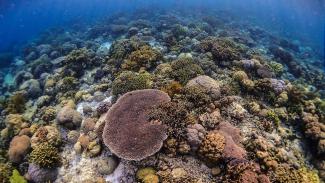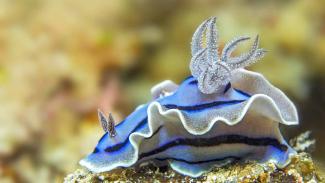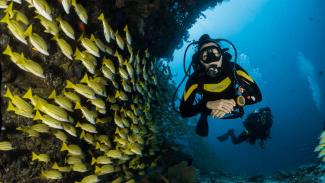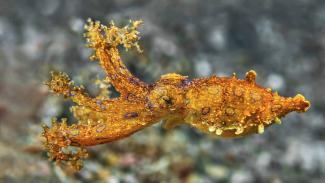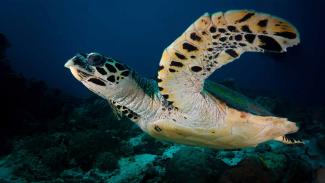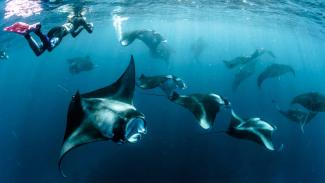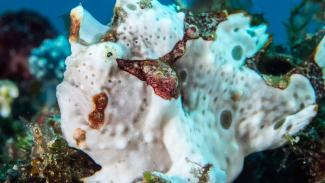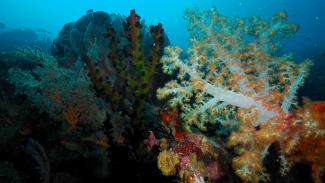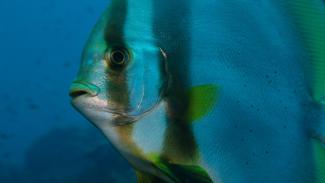Your independent guide to the best scuba diving in Indonesia
Indonesia is the world’s largest archipelago, with an incredible 17,000 islands to dive, snorkel and explore. Sitting at the heart of the Coral Triangle, this island nation has world class dive sites at every turn.
Komodo National Park and Raja Ampat offer some of the best diving in Indonesia and are excellent for liveaboard adventures. Sulawesi & Bali offer plentiful resort based diving choices, while adventurous divers and snorkellers can enjoy many more remote dive spots.
Indonesia is blessed with unrivalled biodiversity; the country's waters are home to 15% of the world’s coral reefs and 25% of all fish species, providing almost endless wonders for divers and snorkellers to discover.

Dorothea Oldani
Highlights
Top dive sites in Indonesia
Due to its unique geography, Indonesia receives a steady flow of nutrient-rich currents to its many islands, creating the perfect conditions for marine life to flourish - and some of the best diving in the world.
The country has great coral reef dives, drift dives, atolls and even underwater volcanoes for scuba divers to enjoy. Due to the high biodiversity in the region, there are many places that are heaven for critter lovers and photographers.
The very best of the diving in Indonesia is generally considered to be in the east of the country, centered around the Celebes, Banda and Flores Seas.
Bali is a very popular destination, with relatively easy access and a wide variety of diving. Just next to Bali, the Gili Islands are the most popular place in Indonesia to learn to dive. The island of Flores provides access to some great diving too, primarily around Komodo National Park, where you can also meet Komodo Dragons, but also Maumere to the east.
To the north, Sulawesi has fantastic options almost everywhere, with Bunaken and Lembeh on the north-eastern tip offering wonderful facilities for divers. Bunaken offers wall diving with pristine reefs, great visibility & incredible diversity, while Lembeh is considered to be the muck-diving captial of the world and a must for critter-lovers.
Also in Sulawesi, the Togian Islands reward intrepid travellers with reef, barrier and atoll diving all in one small area. Wakatobi, a remote spot in the south-east corner of Sulawesi, also has many world-class dive spots.
Further east are the Banda Islands and Alor, plus Raja Ampat, the most diverse habitat on earth.
To the west of Indonesia just off the tip of Sumatra, Pulah Weh has great drift diving, wreck diving and shore diving, with the chance to encounter anything from Killer Whales to Mimic Octopus.
Keen to find out more? Skip on through to our detailed review of all of Indonesia's best diving destinations.
Marine life in Indonesia
With probably the highest marine diversity of any country on earth, Indonesia has an abundance of attractions. You can dive or snorkel with Manta Rays in Indonesia. Sharks can also be seen, as can the rare Sunfish at the right time of year in Bali. Whale shark sightings are possible in certain areas.
Some of the best diving in Indonesia is focussed on smaller marine life though, with a list that includes the Pygmy Seahorse, Mimic Octopus, Flambouyant Cuttlefish, Leafy Scorpionfish, Frogfish, Mandarinfish and more.
The Lembeh Strait is the most famous spot for seeing such smaller delights, but there is a great diversity at numerous other sites, including Bunaken, Wakatobi, the Banda Sea, Alor, Raja Ampat, Bali and Flores.
Ease of travel
Getting to Indonesia is very straight-forward, with International airports in Jakarta, Bali, Manado and Makassar. Once in the country, travelling to different islands can take a little planning, but this is all part of the adventure.
The islands are connected by numerous ferry services, however the distances, logistics and old age of many of the ferries make this option somewhat painful. The advent of affordable air travel has made island-hopping significantly easier, with multiple domestic airlines offering routes to many diving areas. Local dive operators or resorts will be only too happy to advise you on the best options to reach your destination.
It is a good idea to leave some margin for delays when planning any trip, especially to remoter parts of the archipelago.
People
Indonesia is a mix of many different cultures and ethnic groups. While predominantly Musilm, there are Hindus in Bali, Christians with Portuguese influences in Flores & Sulawesi and many indigenous populations in Sulawesi & West Papua. The majority of Indonesia’s 230 million in habitants live on Java.
Safey
Indonesia is generally a safe country to travel around, however there are regional tensions in certain areas and some foreign offices recommend avoiding certain parts of the archipelago. Indonesia has been the victim of terrorist attacks in the past and it cannot be said for certain that such attacks will not occur again.
The standards of transport in many areas are not up to western standards with poor roads and ageing buses and ferries. There have also been accidents & safety issues with airlines in the past.
The region is also seismically active with many active volcanoes and also earthquake activity.
Best liveaboard diving in Indonesia
With so many islands to explore, Indonesia is a wonderful liveaboard diving destination, with plentiful opportunities for exceptional liveaboard diving itineraries.
The two most famous liveaboard diving destinations are Komodo National Park and Raja Ampat. Many liveaboards split their time between these two destinations, visiting Raja Ampat between December and April, then Komodo National Park from June to October.
In between these periods, many liveaboards operate more unusual itineraries or transition trips, visiting areas such as Maumere, Alor or the Ambon.
Liveaboard adventures can also be enjoyed in Wakatobi, Halmahera, Cenderawasih Bay and the Southeast Moluccas, often known as the Forgotten Islands.
We recommend the team at Liveaboard.com to find your perfect liveaboard adventure!

Best places to see Manta Rays in Indonesia
It is posssible to see Manta Rays in a number of places in Indonesia. The easiest spot to reach in order to dive or snorkel with Manta Rays is Bali in Indonesia. From here, it is possible to arrange a dive trip to Manta Point in Nusa Peninda.
Manta Rays are also regularly seen in both Komodo National Park and Raja Ampat.
The best place to see Manta Rays is probably Sangalaki in Kalimantan, Borneo. This area is blessed with a large aggregatioin of resident manta rays that are often found feeding near the surface, making encounters ideal for snorkelling.

Tara North

Tara North




